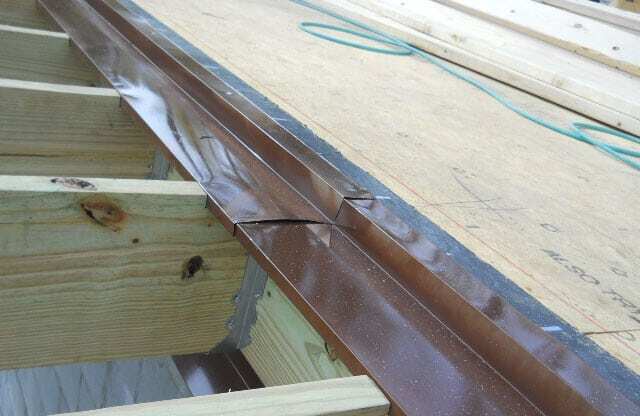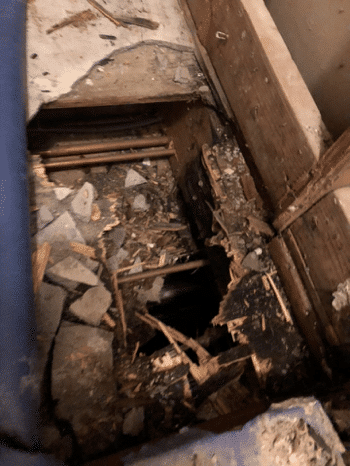Dry rot can be a messy and costly problem if left unidentified and unfixed. And all the rain we get in the Portland area — 43 inches annually on average — can make local homes more susceptible. Here are some tips on how to identify dry rot in your home and how to get it taken care of.
The high annual rainfall in the Portland area means it’s that much more important to make sure barriers to keep water out of your home are properly sealed and cared for. But sometimes water can still seep in, and that can cause significant damage if it gets inside your structure.
Common places for dry rot to occur
Deck-to-wall flashing
A very common area that attracts dry rot is where a deck connects to the main structure of your home, specifically at the site of the flashing. Flashing is usually comprised of strips of metal designed to prevent moisture from entering the house.

If the flashing is improperly installed, it can funnel water directly inside to your walls. That can inundate them with moisture and lead to potentially massive dry rot damage — in everything from the 2 x 4s to the insulation.
Roof flashings
Another common dry rot area is around flashing on the roof, especially near skylights, chimneys, and wall-to-roof transitions.

If those flashings aren’t done properly, that can direct water right into your roof structure, and potentially into your attic and walls. Again, this can result in significant dry rot damage.
Doors and windows
Door and window openings also can be a major source of dry rot if the flashing around them isn’t installed correctly. In these cases, water is typically being drawn behind the siding. Sometimes only the siding is affected. But if left unchecked, dry rot can also occur inside the walls and harm the 2 x 4s, insulation, and sheathing.
Shower pans
Those first three areas noted above are all located outside the home. But one spot in particular can be a major source of dry rot inside, and that’s around leaky shower pans.

We’ve seen significant issues with both tile and fiberglass shower pans, so dry rot can occur regardless of the base material you have installed. If you suspect yours is leaking and may be causing dry rot, try to look underneath the shower pan area.
So, if the shower is over a crawl space, go into the crawl space and see if you can detect any moisture or compromised wood. If the shower is on a second story, keep an eye on the drywall below the shower pan. If it’s significantly leaking, you’ll likely begin to see some staining or other indications of water buildup.
How to diagnose dry rot: the screwdriver test
Once you think you’ve identified some dry rot in your home, you can help determine the severity by using an everyday screwdriver.
Take the screwdriver and try to penetrate the wood where you think the dry rot is occurring. If the screwdriver slides into the wood easily and penetrates an inch or two, chances are you have a dry rot issue that needs to be addressed fairly quickly. This is especially true if the screwdriver goes all the way through and you can start pulling apart the wood with your fingers.

If the screwdriver fails to break through the wood surface or encounters a lot of resistance, then you may not have dry rot, or it’s not that severe yet.
When should you address dry rot?
If you’re concerned that you have dry rot in your home, it’s important that you address it sooner rather than later.
We recently did a repair for a client whose shower was leaking. He knew it had been leaking for about 5 years, but waited to take care of it. As a result, water continued to leak, which added thousands of dollars to the repair cost. The sort of obvious pro tip here? Don’t wait to address it if you think you may have a leak that’s causing dry rot.
Do you think you may have some areas of dry rot in your home? We’re happy to discuss your concerns and help repair any issues. Simply schedule a conversation with us!

